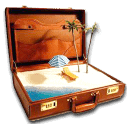
If you have dived in Bahamas before, please share your experiences: Dive spots you would recommend, which Dive Center you used, Fishes & Diving, Visibility, Currents, etc. Please post your comments in the section below, by doing so you will help fellow divers to plan their next trip

Scuba Diving the Bahamas
Diving in the Bahamas has something for everyone. Different portions of the country give a different taste to the diving.
- The northernmost island is off the coast of West Palm Beach while the southernmost is near Haiti.
- Bimini Island sits closest to Florida only about 50 miles away. Between the Florida coast and the Bahamas is the Florida Barrier Reef. This is the third largest barrier reef system in the world. One trait of a barrier reef is that it faces deep water, and the Florida Barrier Reef does that.
In this area between the US coast line and the Bahamas you will also find the Gulf Stream. This is a warm water current that originates in the Gulf of Mexico goes into the Caribbean Sea and north along the American coast line before turning towards Europe. The water supports a wide variety of marine life.
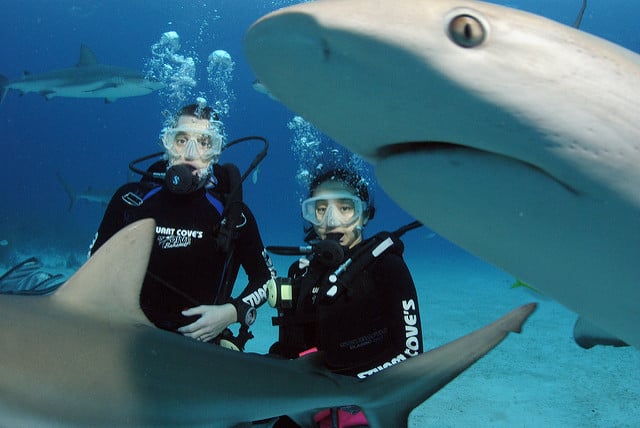
Shark Diving in the Bahamas Photograph by Dan Theurer
Fringing reefs are common around most of the islands. In places these shallow reefs will have walls that drop a thousand feet. Most notably is the mile-deep abyss Tongue of the Ocean.
In this page you will find more detailed information about scuba diving in Bahamas.
Table of contents
Best Dive Review
The best way to look at diving the Bahamas is to start by looking at the differences between resort diving and Liveaboard diving. You also need to break it down to the Main Islands and the Outer Islands. While Nassau and Freeport get the majority of the tourist and a good percentage of the Scuba divers, there are a number of dive destinations in the country.
How to dive Bahamas?
As mentioned there are only 30 inhabited islands scatter over a great distance, there are 23 domestic airports that keeps them connected. There are also an additional 38 private airstrips. So getting to your destination is not overly difficult. However, if you want to sample diving in different portions of the country, the airfare may become your greatest expense.
Eleuthera and the Exuma Cays offer great diving with many resorts and is the most common destination for the Liveaboard dive vessels.
- The Exuma Cays start about 35 miles southeast of Nassau. The archipelago is separated into three sections and spans about 80 miles north to south. In all there are about 365 cays and islands. The liveaboards depart from Nassau on a seven day sailing. There are a few that sail from the U.S. port of Miami that visits the Family Islands.
- The Bimini Islands are one of the best known Family Island dive destination. It is also well known as a sports fishing destination. The large pelagic species that are found in the area attract both the divers and the fisherman.
The Bahamas is an island chain with over 700 islands and 2,400 cays that extends 760 miles. To the locals there are two Bahamas. The Main islands is where 80% of the counties population resides. Grand Bahama Island is the home of Freeport and about 10% of the population. New Providence Island, the home of the nation’s capital Nassau, and the small nearby Paradise Island has about 70% of the countries population. These two islands have the majority of the countries tourism infrastructure and visitors. Nassau is the busiest cruise port in the world and 70% of the countries tourist are cruise ship passengers.
The “other” Bahamas is the Out Islands also called the Family Islands. Of the over 3,000 islands and cays on 30 are inhabited. Abaco is the largest of the islands in the Bahamas, many times the size of both of the main islands together. Still it has slightly less population than Grand Bahama also about 10% of the population. The remained of the people are over the rest of the islands.
Where to stay?
I usually use this website to book in advance my hotels in Bahamas as they usually have the lowest rates I find. I like it because it's free to cancel and change the dates.
Best time to dive in Bahamas

Blue Lagoon also known as Salt Cay near Nassau
The Bahamas is a year round vacation destination. Being close to the US mainland and having a number of US air gateways, it is easily accessible. Weather patterns remain similar the entire year except during hurricane season.
- June 1 to November 30 marks the hurricane season in the Caribbean. However, most of the Bahamas are out of the main hurricane track receiving less impact then the US Mainland.
- The tourist season follows the US holiday schedules being busy in the summer months (June to August) and the spring break period. Spring break is when the college students are out of classes for two to three weeks. While each college sets their own schedule it is normal mid March.
Top liveaboards in Bahamas according to divers reviews
Dive courses
Learning to Scuba dive is very popular in the Bahamas. There is really no location that does not have access to conditions suitable for learning to become a Scuba Diver or Open Water Diver.
Advance Open Water Training is also popular as are most of the specialty dives. The Bahamas has it’s share of limestone caves underwater, some are locally called “blue holes”. Some of these make for excellent training for cavern diving and experienced tech divers can take cave courses.
Scuba Diving conditions
The diving conditions in the Bahamas are generally great.
The visibility in close to the main islands might suffer at times, however, dive sites a short boat ride away will have great visibility. Most Dive sites in the Family Islands will have visibility over 100 feet year round. Visibility over 150 feet is common on sites near the deeper waters.
The coldest water temperature is about 75°F (22°C) in January and February. A 3mm or 5mm wet suit is the most commonly worn. By the end of the summer in August, many divers just wear a dive skin as the water is about 83°F(28°C).
Snorkelling in Bahamas
Snorkeling is excellent in the Bahamas and is one of the most popular attractions for the cruise ship passengers. Snorkeling excursions around the Main Islands is generally done from boats that take guest to off shore reefs.
Most of the resorts in the Outer Islands ( Family Islands) have reefs just off shore and offer snorkeling from the beaches.
Fishes and Coral
The combination of shallow waters around the islands and super deep waters gives Scuba divers the opportunity to experience a wide range of marine life. The reefs are full with many varieties of reef fish and corals. Divers will also find:
- Sharks. Shark diving is one of the things that the Bahamas are well known for. Bimini Islands are well known for the dives with Bull Sharks. Freeport is also known for shark feeding. Caribbean Reef Sharks as well as the Oceanic White tip are fairly common to see. There is over a dozen different species that frequent the waters of the Bahamas. Most are found year round in large numbers including Hammerheads. Bull sharks, Lemon sharks and Tiger sharks are considered seasonal, still they are found year round.
- Queen conch. You have not officially been to the Bahamas until you have eaten Queen conch. It is used in a number of different ways including fritters and soup. The Queen Conch is the National Symbol of the Bahamas.
- Whales. Whales are seasonal, migrating to the warmer waters during the cold winters up north. Humpbacks, Sperm whales, Minke whales, and Pilot whales are commonly seen
- Nassau grouper. The Nassau Grouper is also closely associated with the Bahamas. Generally found alone, It is one of the largest of the grouper family. Divers who visit late January and early February may have the opportunity to witness the spawning season. Aggregation of hundreds of these large fish can be seen at this time.
- Dolphins such as the common bottlenose dolphins and the Atlantic spotted dolphins will often be seen on the way to dive sites and may even approach divers.
- Adult turtles are common. Green, Hawksbill and Loggerhead turtles spend much of their adult lives in the area. They are not know to bred in the Bahamas, but head deeper into the Caribbean sea for that.
Diving Safety
If you are planning an upcoming dive trip or travelling to Bahamas, it is a really good idea to invest in travel insurance for scuba diving, because you never know what could happen and when you might need it (because accidents do happen!). I recommend this diving insurance as they offer worldwide coverage and focus on providing scuba divers a quality insurance and medical assistance service.
The Bahamas as a diving destination offers divers a diverse experience. The Out Islands especially have a very high repeat rate. Divers return to the small remote dive resorts or to the liveaboards to experience a truly relaxing vacation.
Photos Bahamas
Travel Guide
Now that you know all about the underwater world, you might want to start planning your scuba holiday! Check out our Bahamas Travel Review for information about how to get there, activities and excursions, where to stay, and more.

Diving Reviews for this region
Dive spots reviews in Bahamas
Liveaboard Reviews in Bahamas
MV Bahamas Aggressor
There are few more luxurious dive vessel
Juliet Sailing & Diving
The almost 32 meters Juliet is a schoone
Blackbeard’s Morning Star
For more than 35 years Blackbeard’s Crui
Blackbeard’s Sea Explorer
Blackbeard’s Sea Explorer and Blackbeard
 Destinations
Destinations



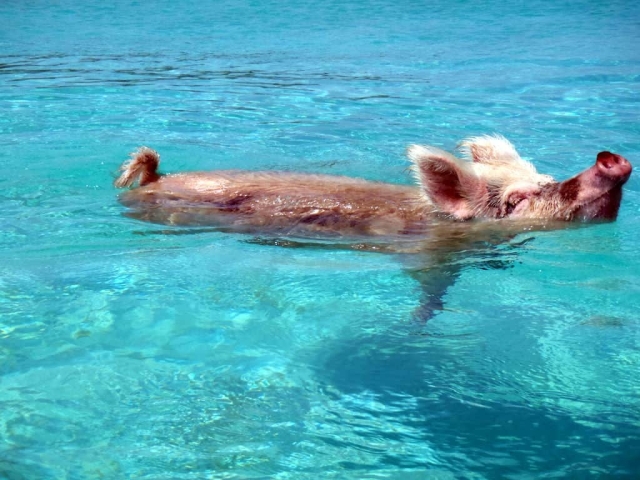
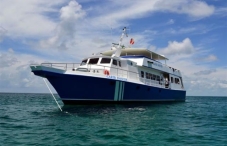

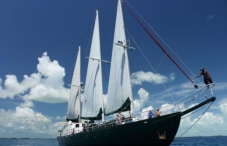
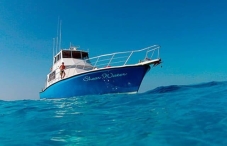


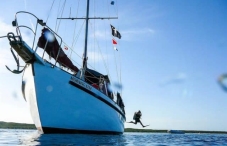
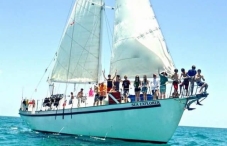
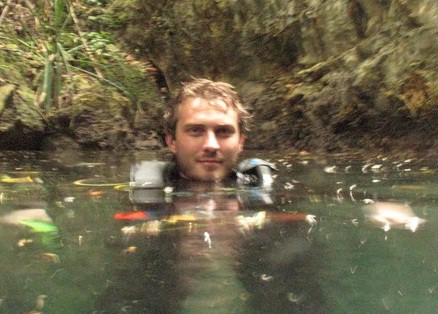




Hallo my name is Hassan Elsayed
I AM Instructor PADI
i speak English
i have good Experience I work now in redsea from 2007.
I looking for job in newa place. And I hope to join in your team …thank you
Hi Hassan!
Unfortunately, your comment is not a the right place. This is a general Bahamas destination page, not any organisation page or anything that has a team
The best option for you to describe your experience and seek to join any diving team is to look on our Job Board – you can either offer your services or browse through existing job offers!
Where ? The menu under the Divezone banner, you’ll see **Diving Jobs**, just click on it!
Hope this helps!
Want to get excited about a scuba diving trip with your kids and then have your dream turn into a nightmare? If so, book a scuba lesson at Stuart Cove’s Dive Bahamas.
On December 21, 2017, Stuart Cove’s Dive Bahamas failed to pick us up at the time and location they had committed to, promised us a refund, failed to deliver on that, and told Viator we had gone on the trip with them. Instead of scuba diving, I spent my day explaining to my three kids that we just got shafted. I expected the Bahama’s to be nice and warm during our frigid mid-west winter, but I didn’t expect the Hell that Stuart Cove’s Dive Bahama put us through.
You try telling your kids they don’t get to scuba dive and put on a fake smile that we’ll have fun anyway. Be forewarned: their websites look nice, but Stuart Cove’s Dive Bahamas is not to be trusted.